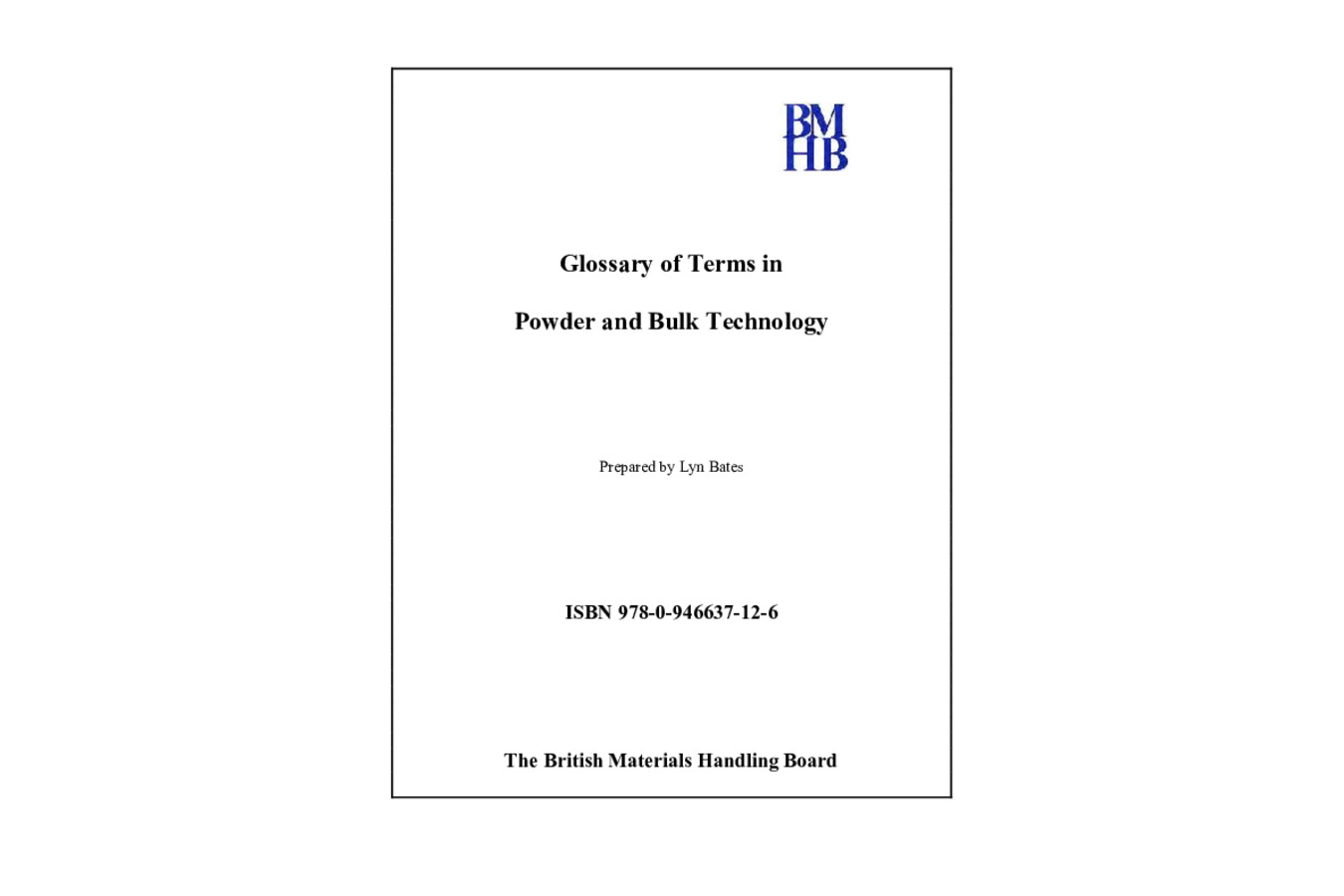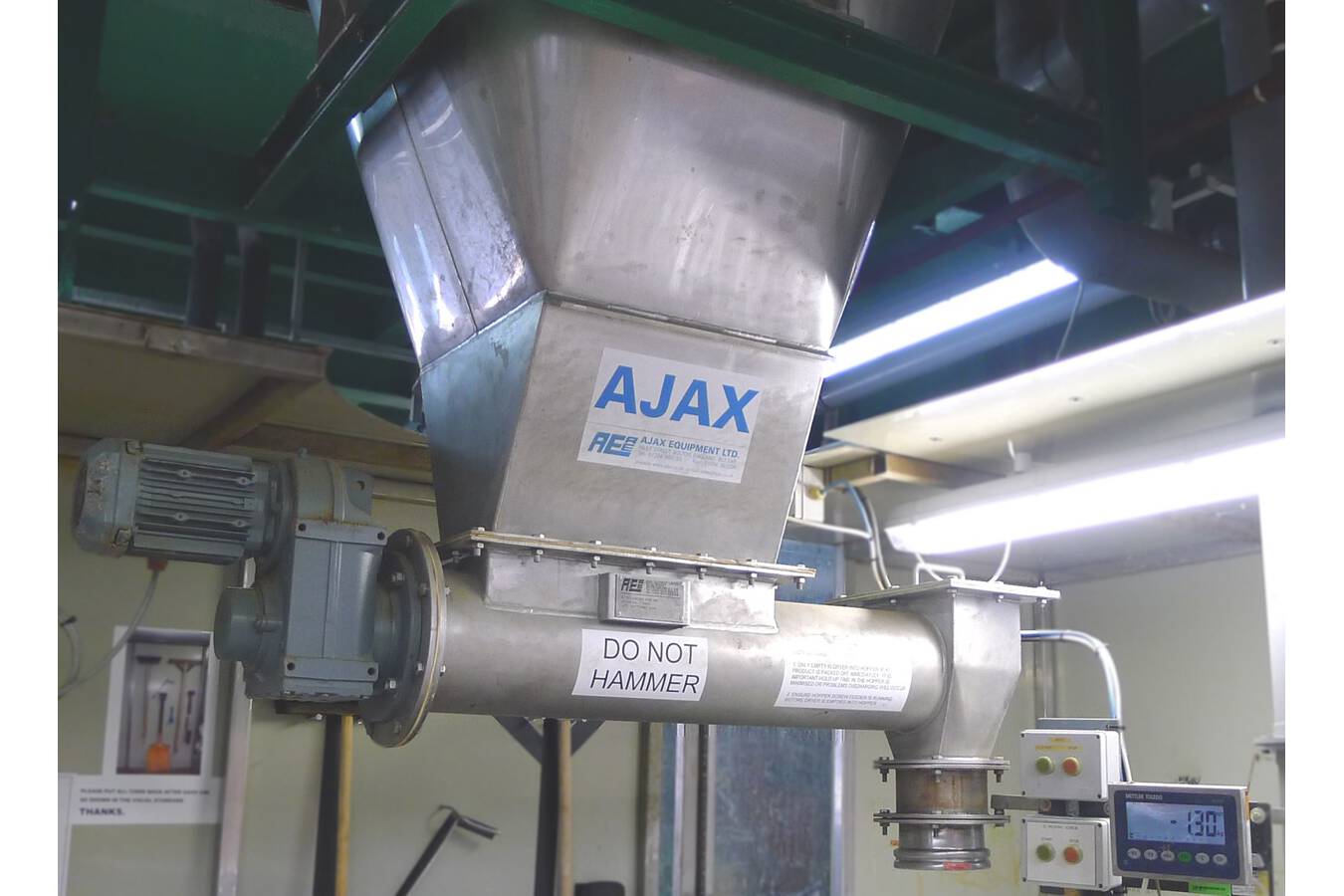Great emphasis is directed to securement of measured values of the flow properties of bulk materials because of the need to design storage, process and handling equipment that provides reliable performance. Until the 1960’s the design of bulk storage equipment depended largely on empirical experience because of the lack of a scientific understanding of the behaviour in bulk of particulate materials. From a background in soil mechanics, [1], hopper design parameters were established in the 1960’s based on the measurement of bulk density, wall friction and shear strength values. [2].
This initiated industrial, academic and Government interest in the benefits that industry may gain from a scientific approach to the subject of bulk technology with seminars, conferences, exhibitions, magazines and specialised courses springing up all over the world. Shear plane length limitations of the Jenike call were overcome by annular cells, [3], [4], [5]. Interest in the dynamic behaviour of powder led to the introduction of the Freeman rheometer, [6]. This measures the torque of rotating a blade through a sample and enables some comparative value to be gained, a phenomenon based approach to bulk behaviour. The important quest remains for quantifying basic bulk strength mechanisms, of which tensile strength is probably the most fundamental.

Tensile strength versus consolidation load
Cohesion and shear resistance
Flow difficulties are often attributed to cohesion, being a reluctance of a bulk material to shear in the absence of a normal stress on the material. Cohesion is actually a consequence of tensile strength, being the origin of the force that is being applied between the members concerned. Shear resistance then develops due to the mechanical overlapping of particles in the shearing plane and the inter-particle friction between the particles.
Fundamental properties
Developments in the subject formed part of Harold Wilson’s ‘White heat of technology’ in the late 1960’s and 70’s. The British Materials Handling Board was set up by the UK Government to unify university and industrial research and Warren Spring Laboratories to carry out pioneering work on examining the fundamental properties of loose solids. Tensile strength was identified as a basic feature influencing the behaviour of bulk materials, being responsible for cohesion, as the resistance to shear developed by tensile forces acting normal to the sharing surface. WSL constructed devices for measuring tensile strength and cohesion that were later developed into commercially available instruments, [7], [8]. The tensile strength of a powder compact can have many values, according to the nature of the particle and the level of stress applied.
Three times tensile strength
There are also three classes of tensile strength, according to how the consolidation stress is applied and the direction in which it is measured.
- The most fundamental is where the bulk is separated in a reverse direction to the applied compacting stress, the separation force reflecting those generated normal to the contact surface. Apart from being awkward to measure due to the difficulty of gripping a sample it is of low interest as is rarely relevant to commercial applications.
- More relevant to flow situations is where failure takes place at 900 to the consolidating stress. This is the weakest form of tensile strength due to the formation stress being a consequence of the minimum principle stress of consolidation. This is the form measured by WSL type instruments.
- A third, much less common class of tensile strength, is the rarer circumstances of failure in a tri-axially consolidated sample, where the direction of separation is irrelevant.
Tensile forces also develop on boundary contact surfaces and become a factor to add to normal forces that develop frictional resistance to slip in hopper, chutes and flow boundary surfaces. They show in wall friction graphs of normal load/ wall friction as a positive value contact load at zero applied normal load. And is often attributed to a variation on contact friction with stress.

Ajax Linear Tensile Tester

Ajax Linear Tensile Tester
All these values are dependent on numerous variables, so the conditions under which they are measured must be related to the operating circumstances of interest. The formation and operating stresses that apply to bulk density and wall friction can usually be determined when time is taken into account, but the bulk strength is dependent on a combination of the mechanical and physical properties of the bulk material in variable ambient and operating conditions according to both the prevailing stress and the stress history of the material.
Packing arrangement
The question arises, ‘What are the underlying, fundamental properties of a bulk material that influence how it will deform and flow?’ These clearly arise from the nature of the particles of composition and the forces acting on them. It can be seen that relative movement of particles in contact will involve both structural interference on the overlapping members and surface interactions on the particle contact surfaces. Attractive forces between particles depend upon how close they are together. The state of packing arrangement is therefore important, so measured values should reflect the operating conditions of interest.
Changes in packing state results in changes in density, void volume and porosity. Bulk expansion for flow creates a temporary differential pressure between the voids and ambient that applies a compressive stress on the bulk that supplement tensile forces that may be present to appose flow.
Particulate solids in a settled condition inevitable nest in packing with a degree of particle overlap. To allow relative motion along the shearing layer it is necessary for local overlapping members to either fracture or move apart and reordering their structure in adjacent layers. Local expansion of the bulk can only take place In confined circumstances at the expense of compaction of the adjacent mass or lifting of the bed. This will be firmly resisted by the passive stress of a settled structure of firm particles. Forces acting during the initiation of flow may therefore be considerably higher that those which are acting is steady state flow conditions. This mechanical resistance to the initiation of flow can be the major element of the resisting force, depending on the size, shape and strength of the particles.
Surface forces
The strength of forces acting on a surface contact depends on many factors which result in a combined value. They may arise from molecular forces as Van der Waal or electrostatic, chemical affinity, sintering, magnetic, fusion, bonding or ‘caking’ A major variable value is moisture content that forms liquid bridges and high surface tension forces. Resistance to separation can also arise from the mechanical interlocking of laminated flakes or fibrous products or the partial vacuum in the voids due to the demand of flow expansion of products that have low permeability. Tensile strength must therefore be measured as a single, unified force.
It is clear that tensile strength represents an important and basic factor in the flow potential of a bulk material. This force can have a significant influence on how a bulk material behaves, especially for powders with particles less than 50 microns.
Summary
Tensile strength is important, not only at high degrees of compaction and stress, as it increases the bulk strength of the mass at a low stress levels and ‘competes’ against the relatively low force of gravity. For an understanding of overall bulk solids behaviour it is necessary to appreciate the contribution and effects of the tensile strength of a particle array. It is the prime component of cohesion, which has many adverse consequences, hence is useful as a classification of flow potential and gives a direct, fundamental measure of the potential difficulties that cohesion causes. It is especially relevant in small scale, low applied stress conditions with low density materials that are often found in the pharmaceutical industry.
References
[1] Hvorslev, M. J. 1936 ‘A ring shearing apparatus for the determination of the shearing resistance and plastic flow of soil’. In Proc. Intl Conf. Soil Mech. Found. Eng, Cambridge, Mass, vol. 2, pp.125–129.
[2] Jenike ‘Flow of solids’, Bull 123 University of Utah experimental station. Vol 53, No.26, Nov.1964
[3] Walker.D.M, annular cell. CEGB. Portishead. Power Technology Vol 1. No.4.1968. ’An annular shear cell for granular materials’.
[4] Schulze annular shear cell. Ring Shear Tester RST-XS.s. Dr. Dietmar Schulze Schüttgutmesstechnik, Am Forst 20, 38302 Wolfenbüttel, Germany
[5] Brookfield annular cell. Brookfield Engineering Laboratories, Inc. 11 Commerce Blvd., Middleboro, Massachusetts 02346 U.S.
[6] FT4 Freeman rheometer. Freeman Technology. 1 Miller Court, Severn Drive, Tewkesbury, GL20 8DN.
[7] Ajax cohesion tester. Ajax Equipment Ltd. Mule Street, Bolton, BL2 2AR.
[8] Ajax tensile tester. Ajax Equipment Ltd. Mule Street, Bolton, BL2 2AR




